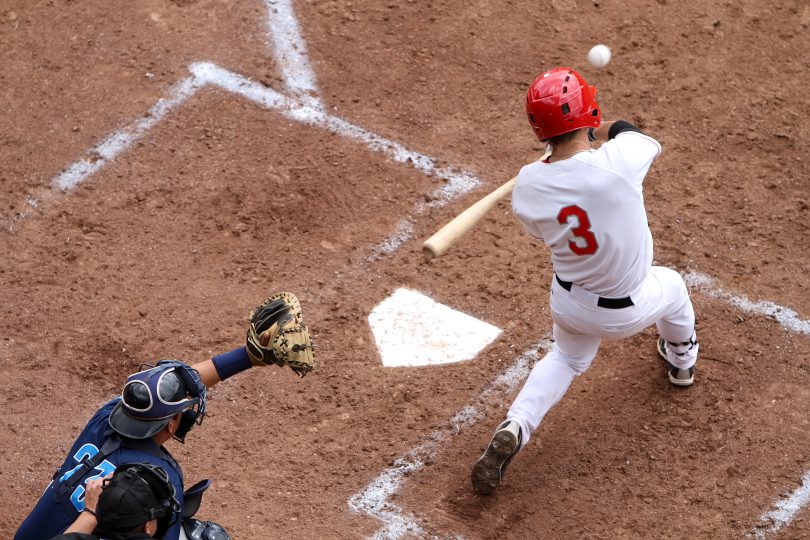The Situation:
It’s a 4-2 game in the bottom of the 9th of an intense win-or-go-home college regional game. There’s been an error on a potential game-ending double play ball, followed by a bases loaded single. With the bases still loaded, there’s a 2-0 count in favor of the right-handed hitter as the left-hander toes the rubber.
The Play:
The lefty comes set, takes a breath, and delivers the pitch. The batter hits the fastball away into right field. It’s a high fly ball of medium depth. The right fielder gets behind the ball, knowing he’ll have a shot to throw the runner out at home with a strong throw. He moves in on the ball and makes the catch as the runner from third tags and sprints towards home. The right fielder takes his quick shuffle step, transfers the ball and throws it in towards third base.
The Outcome:
The runner from third heads home and scores, making it a 4-3 game, but because the throw comes to the 3rd base cut guy, the runner on second is forced to stay. With the tying run on second and the winning run on 1st, the coach makes a call to the bullpen for the right-on-right matchup. The hard throwing right-hander comes in and gets ahead with a fastball before getting two swing-and-misses on hard sliders in the dirt. The game is over and the defense advances to the Super Regionals.
What Went Wrong:
You might be thinking that because he had a shot to throw out the runner at home, the right fielder should have made that throw. If that is your thought process, here’s why you’re wrong and the right fielder’s decision was correct. As a ballplayer, you live for the big moment. So while every fiber of the right fielder’s body probably wanted to be the hero and dramatically throw the runner out at home to end the game, his baseball intellect prevailed. Throwing home would be a low percentage play. In other words, because it would take a near perfect throw—something that is incredibly hard to do—the winning play is to keep the tying run at 2nd and the winning run out of scoring position at 1st. The 3rd run is not the run that matters. The 4th and 5th runs are the ones that the defense needs to keep from scoring.
Keeping the runs that matter farther from home plate helps in a number of ways. First, it obviously makes it harder for the offense to score. But also important is the peace of mind it gives the pitcher and defense knowing that a mistake, wild-pitch, or even a single would not necessarily lead to a loss. It may also impact pitch calling, as the hard throwing right-hander and his catcher gain the confidence to throw the slider down and out of the zone when ahead in the count, without worrying that a wild pitch will tie the game. It’s still a tense situation, but there’s a margin for error and it will take a mistake and a hit or an extra-base hit for the offense to win the game.
The decision-making by the right fielder on this play is incredibly difficult because instincts (wanting to make a big play) and game strategy (playing the percentages) don’t match up. Advanced decision-making like this helps explain why his team is Super Regional bound. Even with a 50-50 chance to throw the runner out at home, the throw should go to third. A team that is well informed will also not allow the right fielder to make this decision on his own. All the defensive players should be yelling at the right fielder to throw the ball to third and keep the trail runners where they are. The nearest outfielder and the first and second baseman have very important roles in relaying this message, but everyone should do their part.
This play is another example of thinking the game in your pre-pitch preparation work and knowing the run that matters!







